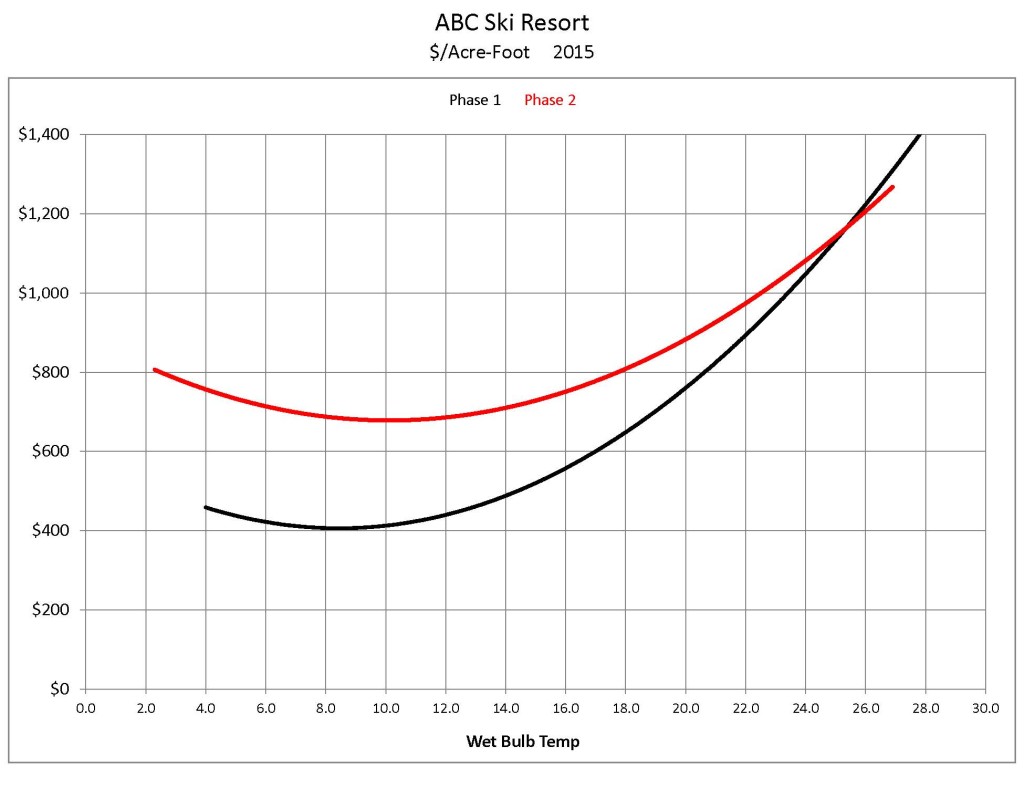This time of year many resorts are reducing the size of snowmaking staff. Most Managers believe this is smart business because less labor cost means less operating expense and more profit. Reality is that decisions to reduce labor can actually cost the company more money, not less. The reason is because wages are only part of the equation for making snow. Energy, time and temperature must also be calculated into the cost to produce an Acre-foot of Snow.
Case Study
KPI’s from a mid-sized ski resort are shown in the chart. Costs for labor, energy and water are correlated to temperature to show the Cost/Acre-foot of Snow. The curve for Phase 1 represents the first 2/3 of the snowmaking season with a field crew of eight per shift. The curve for Phase 2 represents the last 1/3 of the season, when this resort always reduces labor to five per shift.

You can see that even though they are making snow at the same temperature, the cost of production per Acre-foot of Snow increases during Phase 2. When these KPI’s were shown to the GM, he was surprised to see that his decision to reduce labor and save money was actually costing more money to make the same amount of snow. For this resort, $11,900 in labor savings was wasted by an extra $22,000 in energy expense. Net amount for the snowmaking layoff was a loss of ($10,100). And the GM admitted he had been doing this every year for 14 years.
Lessons Learned
Time is Money – The increased energy costs came from compressor bypass. Once a compressor is loaded, it takes the smaller crew a longer time to start, adjust and stop the same amount of snow guns. Over $10K blew out the bypass – but because it was unidentified and unmeasured, it was overlooked. We can’t manage what we don’t measure.
Habit – Because this wasted energy is hidden in the monthly utility bill, it is accepted as the cost to make snow. This hidden cost is typically carried over to the next seasons top-down budget, (just like this GM did for 14 seasons.)
Solutions
Measurement Methods – Averages and totals for GPM, labor and energy have been used for so long that they are believed to be most effective. These outputs are measured against time; while the more applicable metrics for snowmaking are measured against temperature-based performance.
Automation – Most of the snow guns at this ski resort are manual or semi-auto. Fully Automatic guns are not dependent on crew size; whereas process control, not human labor, is constantly regulating flow to temperature.
Summary
These best practices for measurements of productivity have been used in industrial processing for decades. By modifying the metrics for snowmaking, your accounting department can quantify and report real-time productivity. This information enables managers with data-driven tools that measure decisions and insure maximum productivity. In other words, your team makes the most snow for the least expense.
Speak Your Mind